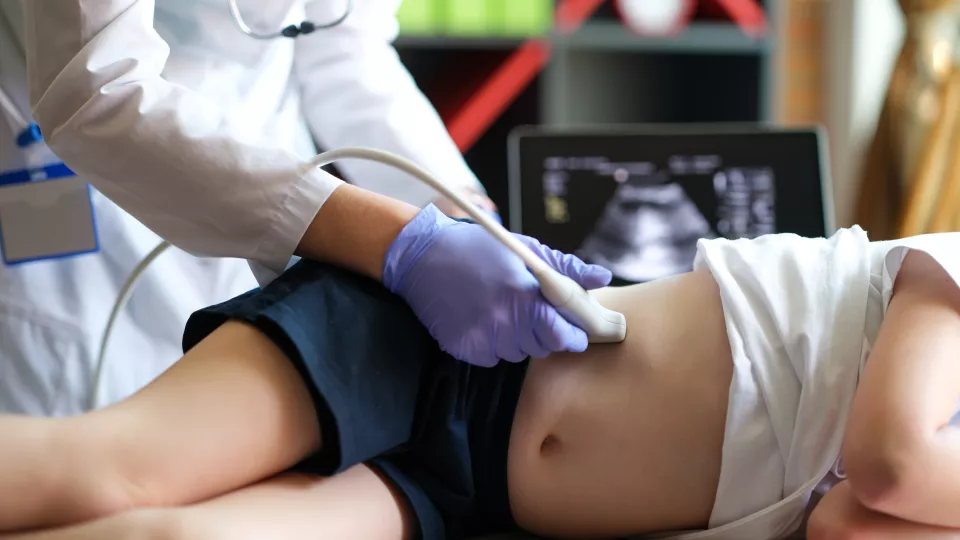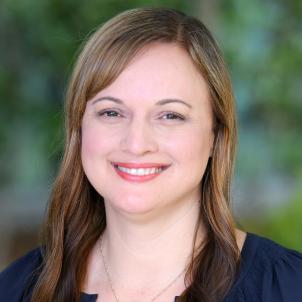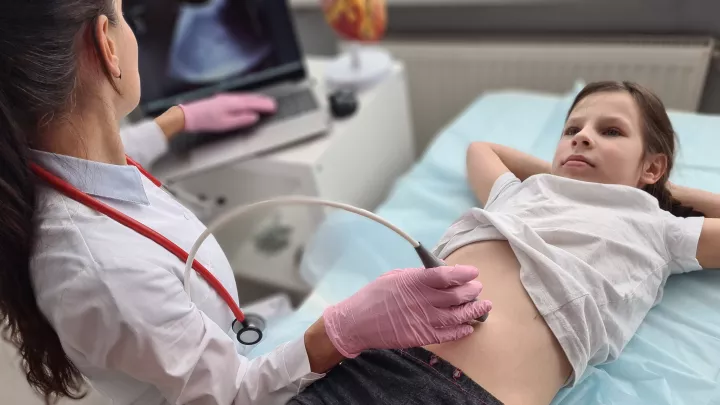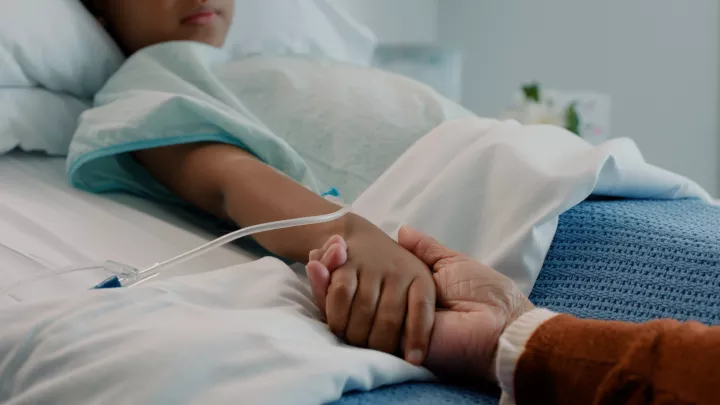
Children’s Hospital Los Angeles App Predicts Transplant Urgency for Children in Acute Liver Failure
Previously healthy children who develop pediatric acute liver failure—an uncommon but life-threatening condition—can need a liver transplant, sometimes at very short notice. But it is hard to know if a particular child will be among the 70% of patients who can recover with their own liver intact. Up to 25% of patients with pediatric acute liver failure will need a liver transplant. Without a transplant, between 10% to 15% of children with acute liver disease will die due to becoming too sick for transplant or not receiving an organ offer in time. Doctors are left to rely on their professional judgement, as these patients can deteriorate unpredictably.
Medical teams want to avoid listing a child for transplant who could otherwise recover on their own—but any delay in transplant referral for a child who suddenly sickens can mean losing potential organ offers. What if there was a way to improve the odds?
A team led by CHLA transplant surgeon, Juliet Emamaullee, MD, PhD, FRCSC, FACS, has now developed a decision support app that can save lives of these seriously ill children, enabling doctors to predict pediatric acute liver patient outcomes with better accuracy. The Children’s Hospital Los Angeles Acute Liver Failure (CHALF) score, published in the journal Transplantation could enable medical teams to assess the risk of a child needing a liver transplant with greater clarity as well as better identify the children who could recover on their own without transplant surgery and lifelong immunosuppressant drugs.
Other decision tools can’t capture pediatric acute liver disease

In a given year, about 50 children with pediatric acute liver disease are listed for transplants. But available decision support tools for liver disease, such as the Kings College Hospital criteria (KCHC), the pediatric end stage liver disease (PELD) score, or the liver injury unit (LIU) score, are not suitable for predicting acute liver failure in children. The KCHC is meant to assess liver status in adults; the PELD score is designed for chronic—not acute—liver disease in children; and the aLIU depends on lab results from one moment in time—none of these tools accurately capture the unexpected, fast onset and dynamic changes in health that occur in children with acute liver failure.
To create the CHALF score, Dr. Emamaullee’s team created a machine learning-based model and trained it on laboratory values derived from common tests that pediatric acute liver patients receive in the emergency room or upon hospital admission. They used data from 147 patients treated at CHLA, sorting them by demographics, diagnosis and laboratory results over the course of hospitalization.
The team validated the tool in a larger group of 492 similar patients in the multi-center National Institutes of Health (NIH) Pediatric Acute Liver Failure Study Group (PALFSG). The model was highly accurate (0.83) in predicting outcomes of children in acute liver failure, outperforming the other two pediatric decision support tools (PELD and aLIU).
Introducing the app

Finally, the team used the output of the model to create a free app, the CHALF score. Available on the CHLA website, and accessible by smartphone, the CHALF score ranks liver failure risk on a scale of 5-60. A score above 30 predicts worse outcomes and should spur urgent referral to a transplant center, and below 30 indicates the probability that patients are likely to survive with their own liver.
“We can now stratify a child as sick enough to need referral to a transplant center and decide if we should list them tonight or have confidence that this kid will probably turn around on their own,” says Rohit Kohli, MBBS, MS, Chief, Division of Gastroenterology, Hepatology and Nutrition at CHLA and paper coauthor.
As a next step, the team will partner with Beth Carter, MD, Medical Director, Liver and Intestinal Transplant Program, and CHLA Primary Investigator on the ongoing NIH-sponsored Treatment for ImmUne Mediated PathopHysiology (TRIUMPH) study, which examines if immunosuppression medications can reverse liver injury in pediatric acute liver patients. The team will test how well the CHALF Score anticipates the outcomes of TRIUMPH participants.
“We would like to see how our score predicts the outcomes as a prospective validation,” says Dr. Emamaullee, “A score that is predictive and reliable can really have an impact on how we take care of patients under clinical uncertainty. But because we have already externally validated it with a big data set from a multi-center study, people can start using it now.”
So far, Dr. Emamaullee’s team has used the CHALF score to assess five CHLA patients with acute liver failure. The app predicted the correct outcome every time. “We think it has much value in helping doctors anticipate patient outcomes so we can time if and when to transplant—or to give kids a better chance of recovery—while keeping their own liver,” says Dr. Emamaullee.


